Electronics News
Archive : 8 March 2016 год
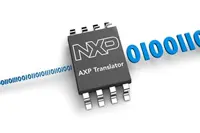 This year’s Embedded World event in Nuremberg saw an increased focus on the Internet of Things (IoT) and security as development in this area is becoming more mature and the threats posed by hackers and malware is understood better.
This year’s Embedded World event in Nuremberg saw an increased focus on the Internet of Things (IoT) and security as development in this area is becoming more mature and the threats posed by hackers and malware is understood better.
Among the announcements at Embedded World was the launch of the Visible Things platform for the development of IoT systems and applications. Unveiled by Avnet Memec-Silica, the platform is intended for a range of industrial markets.
Maxim Integrated introduced the MAX14827, a dual-channel 250mA IO-Link transceiver which integrates the high voltage functions commonly found in industrial sensors, including two low power drivers with active reverse polarity protection.
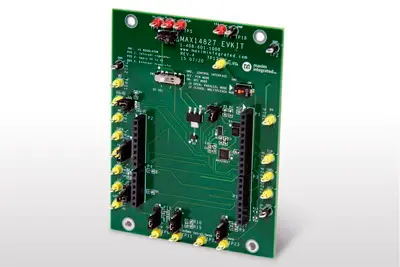
Altium showed a pre-release BETA version of its power distribution network (PDN) analysis solution for Altium Designer, its flagship PCB design platform. The PDN Analyzer extension is intended to allow engineers to resolve PDN issues more easily as they arise in the board layout process, without having to rely on physical prototypes to identify voltage and current issues.
Cypress added the S Series to its PSoC 4 family. With an ARM Cortex-M0+ processor, 16 to 64kbyte of flash and up to 36 general purpose I/O, the part integrates CapSense capacitive sensing technology. PSoC 4 devices are targeted at industrial systems, wearable electronics and home appliances.
Silicon Labs announced the Wireless Gecko range of wireless SoCs. The three families include: Blue Gecko, offering Bluetooth Smart connectivity; Mighty Gecko, featuring ZigBee and Thread connectivity; and Flex Gecko, that supports proprietary wireless protocol options.
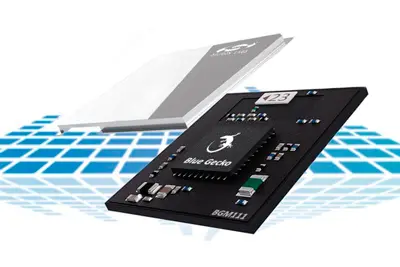
NXP introduced the QorlQ LS1012A processor. Alongside a 2Gbit/s packet cryptoaccelerator and an ARM Cortex-A53 core, the device offers dual 2.5Gbit Ethernet, PCIe, SATA3 and USB 3.0 with integrated PHY. It also unveiled the AXP family of logic translators, said to be the lowest power and voltage translator solutions on the market, while offering voltage translation in a range from 0.7 to 5.5V.
Pericom Semiconductor launched a number of products, the most eye-catching being the PCIe 2.0 packet switch which, according to the company, is the industry’s only such device that supports x4 upstream to 2 x2 ports downstream, and the AECQ three Port/four Lane packet switch for infotainment applications.
Finally, Infineonsays its XMC1400 MCU range will enable new applications in industrial automation, digital power conversion and electronic control. Devices in the Cortex-M0 based range run at up to 48MHz, while elements such as the PWM timers and A/D converters can operate at 96MHz. There are four CCU timer modules, two interfaces for Hall sensors or optical encoders and up to four comparators for the regulation of switching power supplies.
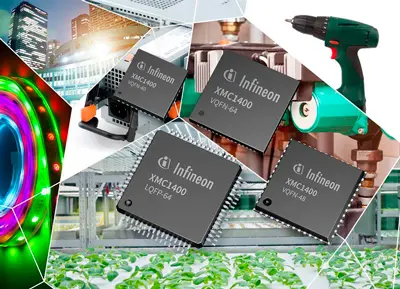
Author
Neil Tyler and Tom Austin-Morgan
Source: www.newelectronics.co.uk
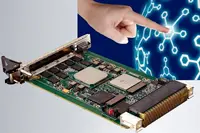 According to Curtiss-Wright Defense Solutions (CWDS), its proposed multiprocessor High Performance Embedded Computing (HPEC) radar processing architecture has met the targets laid down in the US Air Force’s Next Generation Radar Processor Study. The goal of the study was to assess how cost-effectively COTS hardware and software could perform airborne radar signal processing.
According to Curtiss-Wright Defense Solutions (CWDS), its proposed multiprocessor High Performance Embedded Computing (HPEC) radar processing architecture has met the targets laid down in the US Air Force’s Next Generation Radar Processor Study. The goal of the study was to assess how cost-effectively COTS hardware and software could perform airborne radar signal processing.
Lynn Bamford, general manager of CWDS, said: “We have successfully demonstrated how our cost effective open architecture DSP and network switch building blocks, along with our open standard based OpenHPEC Accelerator Suite of software tools, can be effectively used to design whole new classes of rugged deployed HPEC solutions that deliver all of the proven cost savings and long lifecycle benefits of COTS technology, while elevating radar processing performance to levels never before achievable.”
CWDS ran and optimised the study’s Synthetic Aperture Radar and Ground Moving Target Indicator benchmarks on a solution comprised of its introduced OpenHPEC Accelerator Suite development tools, five OpenVPX DSP modules and a 40Gbit/s OpenVPX Ethernet switch module.
During the study, CWDS tested currently available, as well as next generation, OpenVPX modules. The test results also showed that standard conduction cooled OpenVPX modules can meet the performance requirements in the ‘most demanding’ USAF environments.
Author
Graham Pitcher
Source: www.newelectronics.co.uk
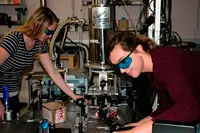 Materials developed by a team of physicists from the University of California, San Diego (UCSD) and The University of Manchester could enable a new generation of optoelectronic devices.
Materials developed by a team of physicists from the University of California, San Diego (UCSD) and The University of Manchester could enable a new generation of optoelectronic devices.
According to the researchers, the materials make it easier to manipulate excitons – electrons and electron holes bound to each other by an electrostatic force. Excitons, created when a laser is shone onto a semiconductor, can transport energy without transporting net electric charge.
Inside a device, excitons interact with each other and their surroundings, then convert back into light that can be detected by CCDs.
While most of the team’s previous work involved structures based on GaAs, they require temperatures of less than 100K. “Our previous structures were built from thin layers of GaAs deposited on top of a substrate with a particular layer thickness and sequence to ensure the specific properties we wanted,” said Erica Calman, a graduate student at UCSD.
The new devices are built from a set of molybdenum disulphide and hexagonal boron nitride, both a single atom thick. “Our specially designed structures help keep excitons bound more tightly together so they can survive at room temperature,” explains Calman.
“The results of our work suggest we may be able to make new structures work all the way up to room temperature,” said Calman. “We set out to prove that we could control the emission of neutral and charged excitations by voltage, temperature and laser power … and demonstrated just that.”
Pic: Erica Calman
Author
Graham Pitcher
Source: www.newelectronics.co.uk

